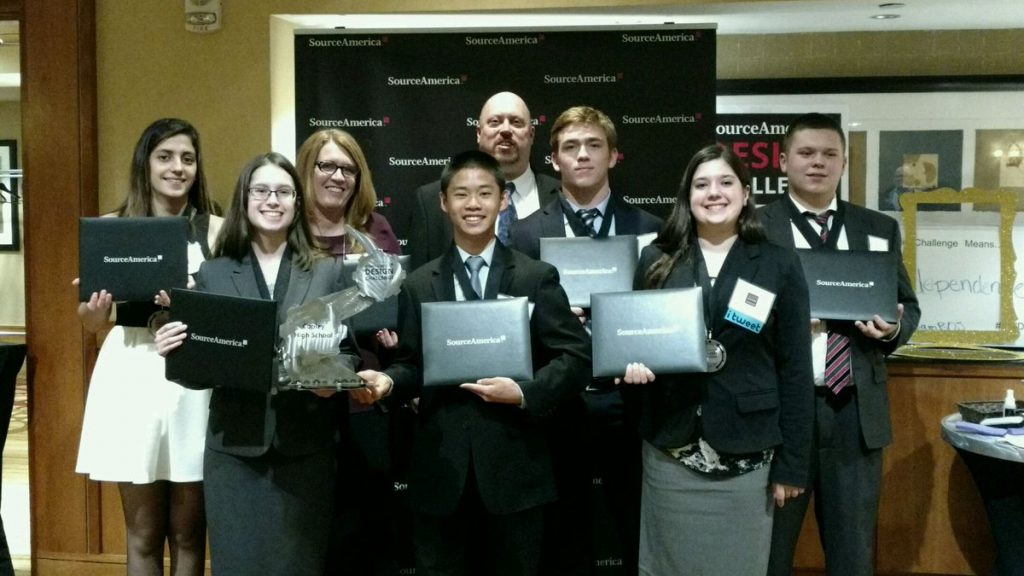We’ve covered the engineering students at Copley High School twice in recent years here in the Student Spotlight. Copley HS is a suburban, public high school just west of Akron, Ohio. The school’s engineering program works closely with local industry and with their disabled employees to help automate various processes to achieve additional productivity for these dedicated workers. The student team also enters the Source America Challenge every year. The Source America Design Challenge is a national engineering competition in which participants create innovative workplace technologies for people
with disabilities.
The Most Recent Project:
The Copley entry for the 2018 Source American Design Challenge High School Division was a cutting machine to prepare bulk packages of lottery receipts for secure shredding. The Paper Stack Cutter (PSC) cuts open packages of pamphlets to prepare them for shredding AND to ensure all employees at Weaver Industries SecurShred can prepare these materials for shredding. These bulk paper bundles are arriving at the shredding facility in bulk packages that are too large and too dense even for industrial shredding equipment to handle. The Copley High School students modified a commercially available, off-the-shelf bandsaw with various safety devices, and retrofitted the controls with AutomationDirect industrial pushbuttons to enable it to perform the required task in a safe fashion.

While not as highly-automated as earlier Copley designs, the PSC continues the success of the high school engineering team, and was awarded fifth place in the Source America Challenge for 2018 – results of the 2018 High School Division are posted here.
Past Project Updates:
Back in 2017, the Copley Innovators created the “Delta Snap” machine to enable disabled workers to easily and efficiently assemble a grinding capsule and top into a salt and pepper grinder cap for the food industry. They won 2nd place in the Source America Challenge national competition for that effort. The machine was controlled by a CLICK PLC and an impressive complement of NITRA pneumatic valves, cylinders, and accessories were used to automate the machine’s actions. You can read all the details in this article. Although the contract for producing the grinder caps has now been completed, Weaver Industries reports that over one million of the grinder caps were produced during the year-long production run of the machine.
3.5 Million Nozzles and Counting:
An even older machine dubbed the “Fomo Nozzle” machine, created by the Copley students in 2015, is still in production, is running two shifts per day – and recently passed the 3.5 million assemblies mark. This machine allows the disabled workers to assemble nozzles for low pressure polyurethane foam insulation, sealants, adhesives, and spray foam systems. This machine was designed and built entirely by the high school engineering team – and, like the Delta Snap machine, it is also controlled by a CLICK PLC and powered by NITRA Pneumatics. You can read the story of the Copley 2016 Challenge entry here.
Joe Buit, the Director of Production Services for Weaver ProPac commented, “We never expected the machine to last this long – the only downtime we have experienced in the past three years was due to lack of lubrication. The fact that this machine is still running 3.5 million nozzles later is a testament to this student team, and the engineering, forethought, and hard work that they put into the effort.”
Video of the Fomo Nozzle machine: https://youtu.be/m3QL1XAaFYc
Click here to read more issues of Automation Notebook.

